Opinion & Analysis
Statistics that make a great Ryder Cup player and the 2014 U.S. Team standings
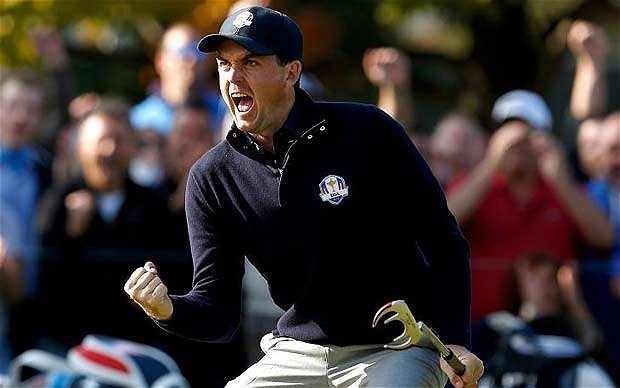
With the Ryder Cup upon us this year, I want to look at the status of the U.S. team from a statistical perspective throughout the season leading up to the event. The U.S. team will have Tom Watson as its captain with four of the 12 members being appointed by Watson. The other eight players will make the team based on points earned.
With that said, what makes for a good Ryder Cup player? This was one of the first things I examined as best as I could since most statistical data prior to 2004 is limited. In the end, I found that there were two player attributes that work very well in the Ryder Cup: a great short game from less than 20 yards around green and good putting.
Look at many of the great all-time Ryder Cup players and they tend to have this common trait: Nick Faldo, Seve Ballesteros, Ian Poulter, Luke Donald, Jose Maria Olazabal, Billy Casper, Larry Nelson, Bernhard Langer and Arnold Palmer. I don’t think anything changes the momentum in a Ryder Cup match than a player who can get his team out of trouble and save crucial pars when the other team thinks it has the hole won.
Great iron play is a player attribute that is a bit less common than a great short game, but there have been plenty of great Ryder Cupper known for their precise iron play. Think of golfers like Colin Montgomerie, Sergio Garcia, Lanny Wadkins and Lee Trevino. They were all great iron players, but they weren’t nearly as good at the other parts of the game.
What makes a good fourball pairing?
Fourball is often referred to as “best ball.” This is where the best score between two players on one team is matched against the best score between two players on the other team. All of the data concludes that the best fourball players make a lot of birdies. This is why Jim Furyk has struggled in the fourball pairings; he typically ranks low on the PGA Tour in birdie percentage.
I feel the best way to pair a fourball team is to look at the players who make a high percentage of birdies, and to pair them up based on their performance on par-3’s, par-4’s and par-5’s. For instance, if both players make a lot of birdies but only play the par-4’s well, they are likely to have difficulty winning the par-3’s and par-5’s. With that said, a captain should value par-4 play the most because there are nearly 2.5 times more par-4’s on the course than the par-3’s or par-5’s.
One of my all-time favorite pairings was J.B. Holmes and Boo Weekley in 2008. Weekley is one of the premier drivers on Tour and would tee off first. He was routinely blasting it 20 yards past Lee Westwood and still finding the fairway. When Weekley would find the fairway, that allowed Holmes to have a free rip at the ball and often times he would hit it 380 yards. If he was playable, he increased his odds of winning the hole outright. If it wasn’t, the steady ball striking of Weekley would still mean that the team had a good chance to win or tie the hole. After the front nine you could see Westwood was visibly frustrated playing the pair.
What make a good foursome pairing?
Foursome play is often referred to as “alternate shot.” Unlike the fourball play, the better players tend to be better at avoiding bogies than making birdies. Historical trends also show that the better foursome format players tend to be very good short game players around the green. Mistakes are going to be made in the foursome format and it helps to have players who can counter those mistakes and end up avoiding bogies.
It is vital for the captain to pair players based on their strengths and weaknesses as well. For instance, a poor pairing would be something like Phil Mickelson and Zach Johnson. Johnson does not play well from the rough and Mickelson struggles to find the fairway. That’s why Johnson and Jason Dufner worked so well at Medinah. Dufner was one of the most effective drivers of the ball in the world at the time, and hit a lot of fairways. That played right into one of Johnson’s strengths of hitting shots from the fairway. And that year Dufner was one of the premier iron players from longer than 150 yards and had a great year with his short game.
Versatility, youth and experience
One of the key components to fielding a team is that the captain should favor player versatility and youth over experience. A captain should look for players who can be effective in both the fourball and foursome formats. If a player struggles badly in the Friday morning foursome matches, the captain may need to sit that player until the Sunday individual matches. And that will require the captain to find a replacement for that player in the Saturday foursome matches. The more versatile the roster is, the more options the captain has and the more the captain can hide the players who are playing poorly.
This leads us to the players who continually make the Ryder Cup based on their experience instead of their performance. We see this every Ryder Cup from the U.S. team. The captain ends up picking a player who usually has a poor Ryder Cup record, but has ample experience. In my opinion, that thinking is tragically flawed because it tells us that the player has experience at underperforming at the Ryder Cup. There are always players who never get that chance at the Ryder Cup, and we are left wondering how they would have performed if they were given the opportunity. But here we have certain players who have been given the opportunity to play in the Ryder Cup and we know that they will perform poorly.
Often times it is not the player’s fault. For instance, Davis Love III caught a lot of flak for making Jim Furyk a captain’s pick. Furyk played brilliantly in all of 2012 and actually played quite well at the Ryder Cup. His playing partner, Brandt Snedeker, played poorly and cost him a match with what was thought of as Europe’s best team in Rory McIlroy and Graeme McDowell. And Furyk was within a small fraction of halving his match with Sergio Garcia. The issue with Furyk is that he is not a versatile player. He is only good for the foursome format and given his age, Love had to limit the matches he could play in order to keep him fresh. So if Furyk came out on fire, the captain can’t use him in the rest of the matches in fear of burning him out.
Here’s a look at the top-12 U.S. players in Ryder Cup points so far (accurate as of 9/10/14), as well as a breakdown of their strengths and potential best pairings.
1. Phil Mickelson
Mickelson’s getting up there in age, but he has developed a game that is more versatile for Ryder Cup play. He is usually best suited for fourball, but with his vast improvement in his putting since working with Dave Stockton he has made himself a much better Foursome player if he is paired with a player who can hit difficult shots out of the rough like Keegan Bradley or Bubba Watson. However, Watson is a weak putter and short game player and would not likely make a good foursome player.
So there are some limitations on what Phil can do given his age and style of play, but he is likely more effective of a Ryder Cup player than any other time in his career. Mickelson’s issues always come down to his driver, but he has actually struck the ball well off the tee so far this year.
2. Jason Dufner
If Dufner regains his 2012 form where he was an elite driver, iron player and short game artist, he is nearly ideal as a Ryder Cup player because he can play in either format with just about any type of player and make their job quite easy. Dufner’s iron play dropped off quite a bit in 2013 and then picked up before the PGA Championship. He’s never been a great putter, but if the rest of his game is like it was in 2012 then Watson should be able to work around it.
3. Dustin Johnson
For a bomber, Johnson is quite versatile because he has shown the ability to perform well in numerous parts of the game. For example, he ranked 12th in short game play in 2013. Johnson is still best suited for fourball given his ability to make birdies, and he performs extremely well on the par-3’s and par-5’s. He is one of those players that could get hot early on and Captain Watson could ride out for the rest of the tournament.
4. Ryan Moore
Moore is ranked 4th because of the start to his 2013-2014 season, as his 2013 season was not overly impressive. He tends to make more birdies than bogeys, and driving is typically the strength of his game. I think he is best suited for the fourball format with a golfer that can really bomb it off the tee and plays the par-3’s well (i.e. Dustin Johnson). I would have Moore tee off first and get his drive out there. If he executes, then let the bomber get a free rip at the ball. I am remain skeptical, however, that Moore can continue this pace and earn a spot on the U.S. team.
5. Harris English
English is only in his 2nd season on Tour so I have limited data on his game. He ranked 17th in Birdie Percentage in 2013, and was very good on the par-4’s and par-5’s. He is also a great putter (14th in Putts Gained in 2013) and a good driver of the ball. His iron play and short game will have to improve this year in order to consider him for the foursome format. For now, he is clearly a favorite for the fourball format and I would probably try to pair him with a strong par-3 and par-4 player (i.e. Dustin Johnson, Jason Dufner, Phil Mickelson, etc).
6. Webb Simpson
Simpson had two very different years in terms of ballstriking in 2012 and 2013. In 2012, he was arguably the best iron player in the world, particularly from the fairway, but he struggled mightily off the tee. In 2013 he drove it fairly well (67th in Driving Effectiveness), but regressed into an above average iron player. He only ranked 77th on iron shots from the fairway.
Meanwhile, his putting and short game remained quite steady, being very good in both areas of the game. He is excellent at the par-3’s, par-4’s and par-5’s and is better at making birdies than bogeys, but ranks well in both categories. This makes for a versatile player, but he is better suited for fourball. I liked his pairing with Bubba Watson in the fourball in 2012, but not in the foursome format. It’s really going to depend on what style of play shows up for Simpson in 2014.
In 2012, the simulations favored Simpson playing with Jason Dufner in the foursome format. If the Ryder Cup was held in 2013, Brandt Snedeker would have been the most favorable partner for Simpson in the foursome format.
7. Jimmy Walker
Walker has been putting extremely well in the 2013-2014 season, which has led to his current ranking in Ryder Cup points. He hits it very long, but he was a mediocre driver of the ball last year (155th in Driving Effectiveness). He was also mediocre on iron shots from the fairway (124th), but excellent from the rough (16th). Walker ranked 26th in both Birdie Percentage and Bogey Avoidance and played the par-4’s and par-5’s very well. This leads me to believe at this moment he is not very versatile as a Ryder Cup player and is mostly suited for the fourball format.
I would pair Walker with a player that can play the par-3’s well like Dustin Johnson or Webb Simpson. If I had to put him in the foursome format, I would look for a long, but effective driver of the ball: someone who can hit it long so that it can make up for Walker’s weak iron play. And a player that has a good enough short game to clean up any of Walker’s misses. Dustin Johnson appears to be an ideal partner in this format.
8. Chris Kirk
Kirk has the makings of a breakout star if he makes the Ryder Cup. Just take a look at these rankings in key metrics in 2013:

Kirk would be best suited for fourball given his ability on the par-3’s and par-4’s, as well as his ability to make a lot of birdies. He would just need to be paired with a great par-5 player like Bubba Watson, Phil Mickelson, Tiger Woods or Keegan Bradley.
Kirk could fit into the foursome format if he is paired with the right player. He will need a partner who drives it effectively while keeping the ball in the fairway. That will play right into Kirk’s strength of hitting iron shots from the fairway. And the longer and more accurate the golfer, the better it works for Kirk since he is so good from inside 175 yards. My simulations show that Kirk would work nicely with Keegan Bradley, Jordan Speith, Webb Simpson and Kevin Streelman.
9. Jim Furyk
Keep him out of the fourball format and you’re pretty much fine. I would also pair him with an accurate driver of the ball as hitting out of the rough is not one of Furyk’s specialties, as well as a golfer who hits it well from 175-or-more yards given Furyk’s lack of distance off the tee. Zach Johnson would be a nice pairing. The same goes for Jordan Spieth and Steve Stricker.
10. Jason Bohn
Bohn is a longshot to make the team, and is on this list based on his play at the Shriners Hospital For Children Open and OHL Classic at Mayakoba. He also turns 41 years old in April.
His strength has always been his iron play from inside 175 yards, particularly from the fairway. He did rank 35th in Birdie Percentage last year, but ranked 119th in Bogey Avoidance. I think he’s best suited for the fourball format with a partner who makes a lot of birdies, but also does a great job of avoiding bogeys and plays the par-5’s very well. The numbers would favor Bohn being paired with Tiger, Stricker or Keegan Bradley in the fourball format.
In the foursome format, he would probably only work well with Bubba Watson because of Watson’s length and overall effectiveness off the tee. Bohn is an unlikely Ryder Cup candidate, but stranger things have happened.
11. Gary Woodland
Woodland seems to finally be getting his game to click. He’s a power player and was struggling to play towards that strength. However, he is likely relegated towards the fourball format because he is one of the worst short game players on Tour. And despite his power, he has never been a great player on the Par-5’s.
Woodland ranked 27th in Birdie Percentage and 92nd in Bogey Avoidance in 2013. So, he would best off with a high-birdie-rate player who can avoid bogeys and play the par-4’s and par-5’s well in the fourball format. Webb Simpson could be an excellent fit for him. If he were to play in the foursome format, it would be best to stick him with an excellent iron player — particularly from the rough — who can putt well to make up for Woodland’s struggles from around the green. Jordan Spieth, Phil Mickelson and Brandt Snedeker top the list as the most suitable teammate for Woodland in the foursome format.
12. Brian Stuard
Stuard recorded three top-6 finishes in a row and also had a T15 at the Shriners, which has earned him his top-12 ranking thus far. Stuard is 31 years old and not a long hitter, but he drives it effectively off the tee (68th in 2013) and putts pretty decently (79th in Putts Gained in 2013). He’s a very steady, Jim Furyk-type of player who ranked 23rd in Bogey Avoidance and 138th in Birdie Percentage. This means that if he were to make the Ryder Cup, he would fit more into the foursome format and should avoid the fourball format at all costs.
Stuard would be best paired with a good iron player, particularly from the fairway to take advantage of his accurate driving and to avoid his need to scramble (Stuard was 131st in Short Game play in 2013). It would also help to have a partner who can find the fairway off the tee in order to help him with his below average iron play. Therefore, he would fit best with Furyk, Spieth, Tiger or Snedeker at this point in time.
Look for an update, Part 2 of this series, after the 2014 Masters!
Opinion & Analysis
The 2 primary challenges golf equipment companies face

As the editor-in-chief of this website and an observer of the GolfWRX forums and other online golf equipment discourse for over a decade, I’m pretty well attuned to the grunts and grumbles of a significant portion of the golf equipment purchasing spectrum. And before you accuse me of lording above all in some digital ivory tower, I’d like to offer that I worked at golf courses (public and private) for years prior to picking up my pen, so I’m well-versed in the non-degenerate golf equipment consumers out there. I touched (green)grass (retail)!
Complaints about the ills of and related to the OEMs usually follow some version of: Product cycles are too short for real innovation, tour equipment isn’t the same as retail (which is largely not true, by the way), too much is invested in marketing and not enough in R&D, top staffer X hasn’t even put the new driver in play, so it’s obviously not superior to the previous generation, prices are too high, and on and on.
Without digging into the merits of any of these claims, which I believe are mostly red herrings, I’d like to bring into view of our rangefinder what I believe to be the two primary difficulties golf equipment companies face.
One: As Terry Koehler, back when he was the CEO of Ben Hogan, told me at the time of the Ft Worth irons launch, if you can’t regularly hit the golf ball in a coin-sized area in the middle of the face, there’s not a ton that iron technology can do for you. Now, this is less true now with respect to irons than when he said it, and is less and less true by degrees as the clubs get larger (utilities, fairways, hybrids, drivers), but there remains a great deal of golf equipment truth in that statement. Think about it — which is to say, in TL;DR fashion, get lessons from a qualified instructor who will teach you about the fundamentals of repeatable impact and how the golf swing works, not just offer band-aid fixes. If you can’t repeatably deliver the golf club to the golf ball in something resembling the manner it was designed for, how can you expect to be getting the most out of the club — put another way, the maximum value from your investment?
Similarly, game improvement equipment can only improve your game if you game it. In other words, get fit for the clubs you ought to be playing rather than filling the bag with the ones you wish you could hit or used to be able to hit. Of course, don’t do this if you don’t care about performance and just want to hit a forged blade while playing off an 18 handicap. That’s absolutely fine. There were plenty of members in clubs back in the day playing Hogan Apex or Mizuno MP-32 irons who had no business doing so from a ballstriking standpoint, but they enjoyed their look, feel, and complementary qualities to their Gatsby hats and cashmere sweaters. Do what brings you a measure of joy in this maddening game.
Now, the second issue. This is not a plea for non-conforming equipment; rather, it is a statement of fact. USGA/R&A limits on every facet of golf equipment are detrimental to golf equipment manufacturers. Sure, you know this, but do you think about it as it applies to almost every element of equipment? A 500cc driver would be inherently more forgiving than a 460cc, as one with a COR measurement in excess of 0.83. 50-inch shafts. Box grooves. And on and on.
Would fewer regulations be objectively bad for the game? Would this erode its soul? Fortunately, that’s beside the point of this exercise, which is merely to point out the facts. The fact, in this case, is that equipment restrictions and regulations are the slaughterbench of an abundance of innovation in the golf equipment space. Is this for the best? Well, now I’ve asked the question twice and might as well give a partial response, I guess my answer to that would be, “It depends on what type of golf you’re playing and who you’re playing it with.”
For my part, I don’t mind embarrassing myself with vintage blades and persimmons chasing after the quasi-spiritual elevation of a well-struck shot, but that’s just me. Plenty of folks don’t give a damn if their grooves are conforming. Plenty of folks think the folks in Liberty Corner ought to add a prison to the museum for such offences. And those are just a few of the considerations for the amateur game — which doesn’t get inside the gallery ropes of the pro game…
Different strokes in the game of golf, in my humble opinion.
Anyway, I believe equipment company engineers are genuinely trying to build better equipment year over year. The marketing departments are trying to find ways to make this equipment appeal to the broadest segment of the golf market possible. All of this against (1) the backdrop of — at least for now — firm product cycles. And golfers who, with their ~15 average handicap (men), for the most part, are not striping the golf ball like Tiger in his prime and seem to have less and less time year over year to practice and improve. (2) Regulations that massively restrict what they’re able to do…
That’s the landscape as I see it and the real headwinds for golf equipment companies. No doubt, there’s more I haven’t considered, but I think the previous is a better — and better faith — point of departure when formulating any serious commentary on the golf equipment world than some of the more cynical and conspiratorial takes I hear.
Agree? Disagree? Think I’m worthy of an Adam Hadwin-esque security guard tackle? Let me know in the comments.
@golfoncbs The infamous Adam Hadwin tackle ? #golf #fyp #canada #pgatour #adamhadwin ? Ghibli-style nostalgic waltz – MaSssuguMusic
Podcasts
Fore Love of Golf: Introducing a new club concept

Episode #16 brings us Cliff McKinney. Cliff is the founder of Old Charlie Golf Club, a new club, and concept, to be built in the Florida panhandle. The model is quite interesting and aims to make great, private golf more affordable. We hope you enjoy the show!
Opinion & Analysis
On Scottie Scheffler wondering ‘What’s the point of winning?’

Last week, I came across a reel from BBC Sport on Instagram featuring Scottie Scheffler speaking to the media ahead of The Open at Royal Portrush. In it, he shared that he often wonders what the point is of wanting to win tournaments so badly — especially when he knows, deep down, that it doesn’t lead to a truly fulfilling life.
View this post on Instagram
“Is it great to be able to win tournaments and to accomplish the things I have in the game of golf? Yeah, it brings tears to my eyes just to think about it because I’ve literally worked my entire life to be good at this sport,” Scheffler said. “To have that kind of sense of accomplishment, I think, is a pretty cool feeling. To get to live out your dreams is very special, but at the end of the day, I’m not out here to inspire the next generation of golfers. I’m not out here to inspire someone to be the best player in the world, because what’s the point?”
Ironically — or perhaps perfectly — he went on to win the claret jug.
That question — what’s the point of winning? — cuts straight to the heart of the human journey.
As someone who’s spent over two decades in the trenches of professional golf, and in deep study of the mental, emotional, and spiritual dimensions of the game, I see Scottie’s inner conflict as a sign of soul evolution in motion.
I came to golf late. I wasn’t a junior standout or college All-American. At 27, I left a steady corporate job to see if I could be on the PGA Tour starting as a 14-handicap, average-length hitter. Over the years, my journey has been defined less by trophies and more by the relentless effort to navigate the deeply inequitable and gated system of professional golf — an effort that ultimately turned inward and helped me evolve as both a golfer and a person.
One perspective that helped me make sense of this inner dissonance around competition and our culture’s tendency to overvalue winning is the idea of soul evolution.
The University of Virginia’s Division of Perceptual Studies has done extensive research on reincarnation, and Netflix’s Surviving Death (Episode 6) explores the topic, too. Whether you take it literally or metaphorically, the idea that we’re on a long arc of growth — from beginner to sage elder — offers a profound perspective.
If you accept the premise literally, then terms like “young soul” and “old soul” start to hold meaning. However, even if we set the word “soul” aside, it’s easy to see that different levels of life experience produce different worldviews.
Newer souls — or people in earlier stages of their development — may be curious and kind but still lack discernment or depth. There is a naivety, and they don’t yet question as deeply, tending to see things in black and white, partly because certainty feels safer than confronting the unknown.
As we gain more experience, we begin to experiment. We test limits. We chase extreme external goals — sometimes at the expense of health, relationships, or inner peace — still operating from hunger, ambition, and the fragility of the ego.
It’s a necessary stage, but often a turbulent and unfulfilling one.
David Duval fell off the map after reaching World No. 1. Bubba Watson had his own “Is this it?” moment with his caddie, Ted Scott, after winning the Masters.
In Aaron Rodgers: Enigma, reflecting on his 2011 Super Bowl win, Rodgers said:
“Now I’ve accomplished the only thing that I really, really wanted to do in my life. Now what? I was like, ‘Did I aim at the wrong thing? Did I spend too much time thinking about stuff that ultimately doesn’t give you true happiness?’”
Jim Carrey once said, “I think everybody should get rich and famous and do everything they ever dreamed of so they can see that it’s not the answer.”
Eventually, though, something shifts.
We begin to see in shades of gray. Winning, dominating, accumulating—these pursuits lose their shine. The rewards feel more fleeting. Living in a constant state of fight-or-flight makes us feel alive, yes, but not happy and joyful.
Compassion begins to replace ambition. Love, presence, and gratitude become more fulfilling than status, profits, or trophies. We crave balance over burnout. Collaboration over competition. Meaning over metrics.
Interestingly, if we zoom out, we can apply this same model to nations and cultures. Countries, like people, have a collective “soul stage” made up of the individuals within them.
Take the United States, for example. I’d place it as a mid-level soul: highly competitive and deeply driven, but still learning emotional maturity. Still uncomfortable with nuance. Still believing that more is always better. Despite its global wins, the U.S. currently ranks just 23rd in happiness (as of 2025). You might liken it to a gifted teenager—bold, eager, and ambitious, but angsty and still figuring out how to live well and in balance. As much as a parent wants to protect their child, sometimes the child has to make their own mistakes to truly grow.
So when Scottie Scheffler wonders what the point of winning is, I don’t see someone losing strength.
I see someone evolving.
He’s beginning to look beyond the leaderboard. Beyond metrics of success that carry a lower vibration. And yet, in a poetic twist, Scheffler did go on to win The Open. But that only reinforces the point: even at the pinnacle, the question remains. And if more of us in the golf and sports world — and in U.S. culture at large — started asking similar questions, we might discover that the more meaningful trophy isn’t about accumulating or beating others at all costs.
It’s about awakening and evolving to something more than winning could ever promise.









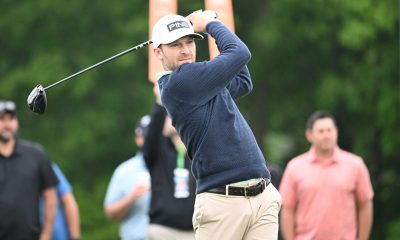

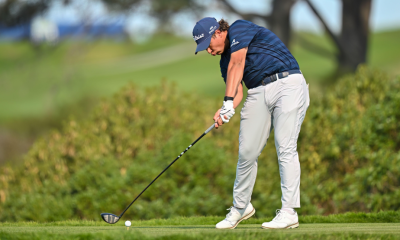

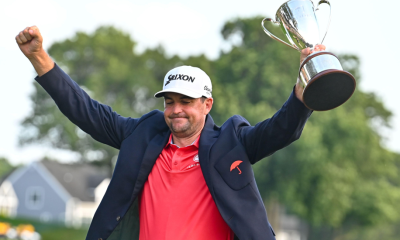



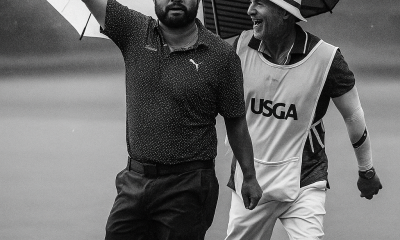

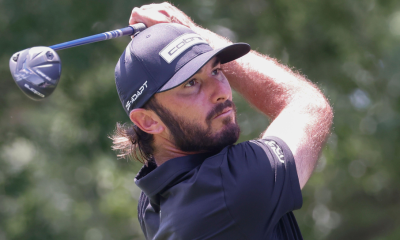









PA PLAYA
Feb 11, 2014 at 5:50 pm
I couldn’t agree more with your thoughts about short game and putting. It has been, and will continue to be, the difference between winning and losing, especially in an event where it’s pretty much a given that just about every player on the team is at the very least a decent ball striker and wedge player.
Absolutely nothing against Ian Poulter, who single handedly turned the momentum against us in that final match Saturday afternoon at Medinah. He was the warrior who rallied the troops that evening, the catalyst for one of the most unbelievable comebacks in European RC history. You take away his ability to putt – he becomes just another run-of-the-mill Ryder Cupper. But those of us who’ve followed him over the past decade, those of us who pull for the Red White and Blue – he’s the one player we least want to see standing over a putt of any significance.
He’s fearless. He’s fearless because he knows that despite giving up 25+ yards off the tee, he can still get the ball into the hole in fewer strokes than his opponents in this event.
Not that team chemistry and all of these other performance aspects aren’t important, but if you don’t have a few great putters on your team who know no fear – you’re probably not going to win very often. It’s tough to find seasoned veterans who aren’t afraid of missing putts, and that pretty much describes all but one US Ryder Cup team over the past 15 years.
Mike H.
Feb 11, 2014 at 11:56 am
Finally someone else that thinks we need youth in the Ryder Cup. The last time the USA won they had a roster full of rookies. Yet we continually are told by the “experts” that you need experience on the team. The only “experience” some of these guys have is the experience of getting beat. It’s time to bring in guys like Spieth, English, and others.
Richie Hunt
Feb 11, 2014 at 3:10 pm
Thanks.
I think with youth the potential is that they may catch lightning in a bottle, much like the Euros did with some of their young players like Sergio and Olazabal. It also helps future teams because a young player may perform exceptionally well at one Ryder Cup and then not qualify for the next Ryder Cup and at least the captain can now consider that player based off their previous performance. Whereas if the young player is never selected, then in the next Ryder Cup it will be difficult for a captain to decipher if he’s worth picking or not.
The Europeans top-20 talent or so is pretty much event with the US top-20 talent. But the US Tour has an entirely deeper talent pool. It’s time that the US team and the people in charge start to try and use that deeper talent pool to their advantage.
IfIfIf
Feb 10, 2014 at 9:15 pm
http://www.youtube.com/watch?v=EnV8kpLotW4
10.00 and onwards….
Richie Hunt
Feb 10, 2014 at 8:23 pm
Thanks. I think the captains need to use statistics to best understand what format best suits the player and what players would likely work best together instead of pairing up players because they are friends. They also need to get every player playing on Day 1 if they can so they can figure out who is hot and who is cold, then ride the hot hands and keep the cold players on the sidelines. I think Furyk could have been a solid career Ryder Cupper if they kept him away from the Fourball format.
Brandel Chamblee
Feb 10, 2014 at 7:44 pm
Nice write up. I’m tired of watching the USA getting pounded by Europe as of late. The Ryder Cup reminds me of the movie miracle because USA puts out the best players even though the margin may be shrinking but we need to start putting out the right players. Pulter is the perfect example because he probably will never win a major but I would never bet against him playing Webb Simpson. USA needs more Keegan Bradley’s and Jordan spieths. I want to see tiger exclamation fist pumps. I love the energy and passion the Ryder cup brings. Furyk and Stricker are great players but I would rather have guys that are not afraid like Ricky fowler and don’t have the scars of previous cups. I love the money ball approach. Please do a follow up closer to the event and look at Europe as well if you can.
Teamer
Jul 9, 2014 at 4:32 pm
Fowler is right on. Corey Pavin thought so. How about his match play success, including Walker cup experience. He has fight and calmness not seen in to many of todays young players.